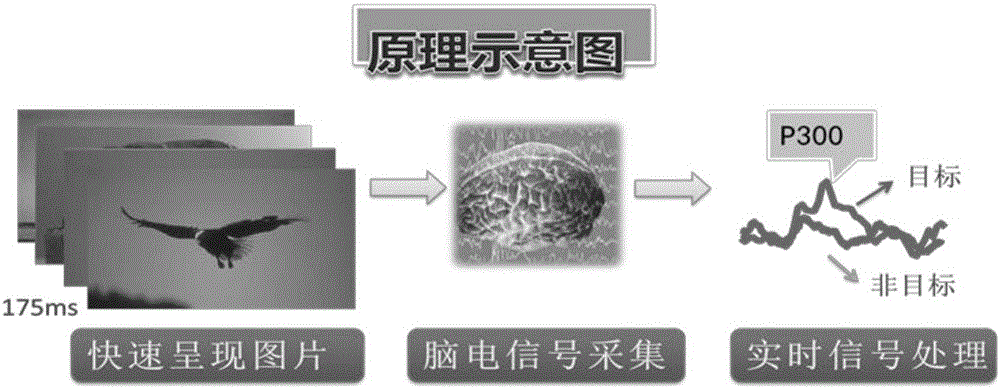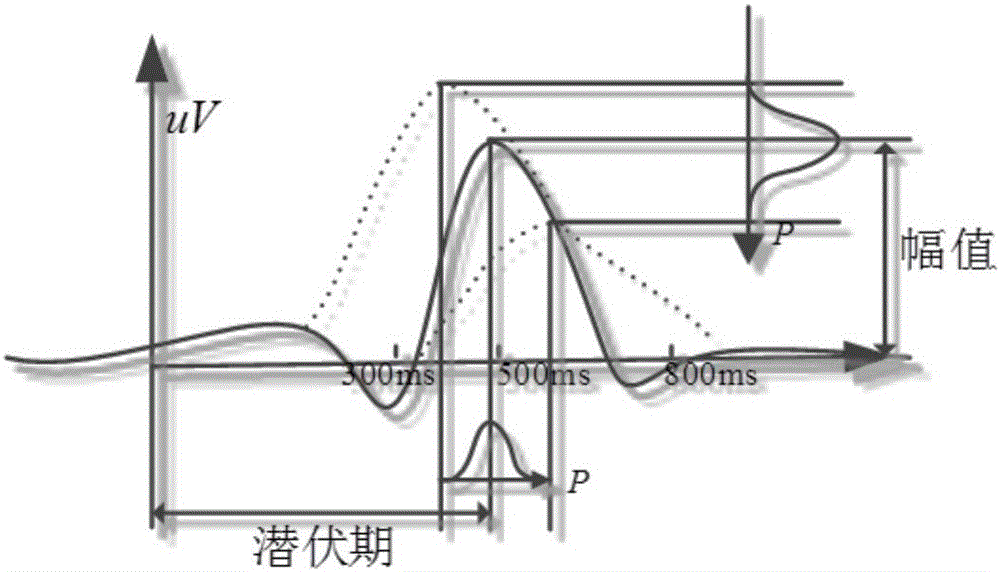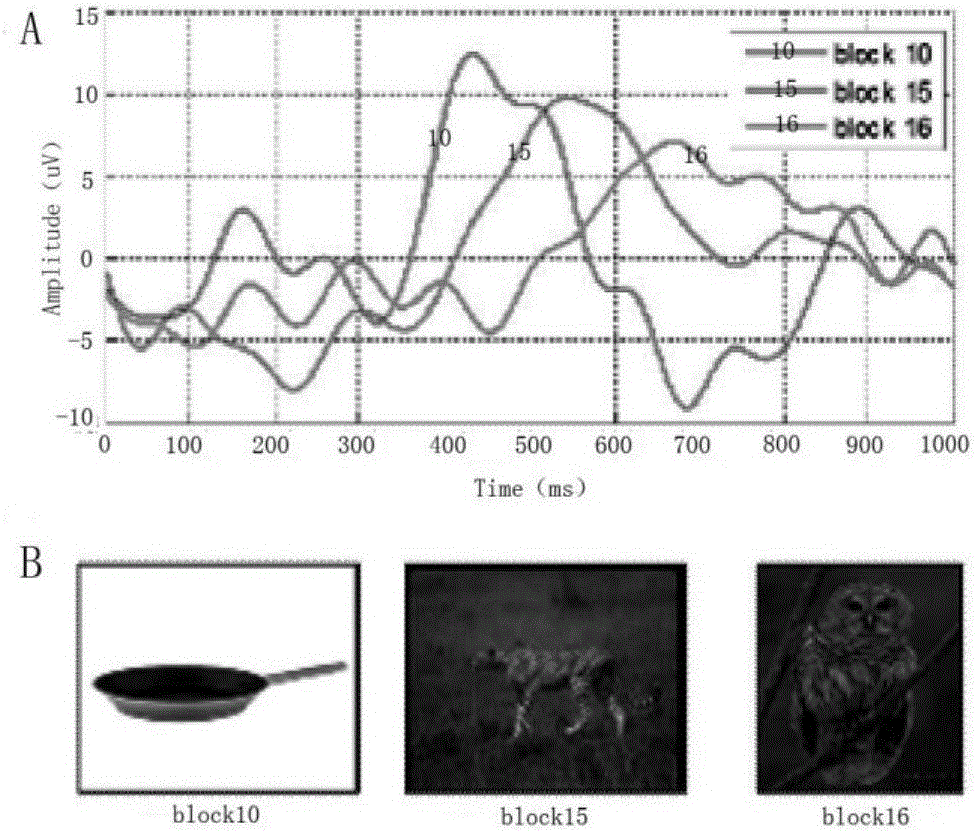Single-trial electroencephalogram P300 component detection method based on folding HDCA algorithm
A component detection and EEG technology, applied in the input/output, computing, computer components and other directions of user/computer interaction, and can solve problems such as latency changes
- Summary
- Abstract
- Description
- Claims
- Application Information
AI Technical Summary
Problems solved by technology
Method used
Image
Examples
Embodiment 1
[0025] Embodiment one, see Figure 1~2 As shown, a single-trial EEG P300 component detection method based on the foldingHDCA algorithm includes the following steps:
[0026] Step 1. While the subject watched the rapid sequence visually presenting the RSVP image sequence, the subject's EEG signal was collected through the EEG signal acquisition device;
[0027] Step 2. Divide the EEG signals corresponding to all images into several time windows, take a time window and the multi-lead signals in the first f time windows to form a new set of lead signals, and use Fisher linear discrimination The device gets the spatial weight w=[w k w k-1 …w k-f ] T , which represents the weight of all lead signals between the kth window and the (k-f)th window, multiplying the original multi-lead signal by the spatial weight w to obtain the dimensionality-reduced one-dimensional in the kth time window signal, namely Among them, N represents the number of sampling points in each time window,...
Embodiment 2
[0031] Embodiment two, see Figure 1-5 As shown, a single-trial EEG P300 component detection method based on the foldingHDCA algorithm includes the following steps:
[0032]Step 1. While the subject watches the rapid sequence visual presentation RSVP image sequence, the subject's EEG signal is collected through the EEG signal acquisition device, wherein the EEG signal acquisition device is an EEG instrument, which collects the subject's EEG signal when watching the picture. Electrical signal, the sampling frequency is 256Hz, and the RSVP image sequence presentation speed is 5 images per second;
[0033] Step 2. Divide the EEG signals corresponding to all images into several time windows, take a time window and the multi-lead signals in the first f time windows to form a new set of lead signals, and use Fisher linear discrimination The device gets the spatial weight w=[w k w k-1 …w k-f ] T , which represents the weight of all lead signals between the kth window and the (k-...
PUM
 Login to View More
Login to View More Abstract
Description
Claims
Application Information
 Login to View More
Login to View More - R&D
- Intellectual Property
- Life Sciences
- Materials
- Tech Scout
- Unparalleled Data Quality
- Higher Quality Content
- 60% Fewer Hallucinations
Browse by: Latest US Patents, China's latest patents, Technical Efficacy Thesaurus, Application Domain, Technology Topic, Popular Technical Reports.
© 2025 PatSnap. All rights reserved.Legal|Privacy policy|Modern Slavery Act Transparency Statement|Sitemap|About US| Contact US: help@patsnap.com



